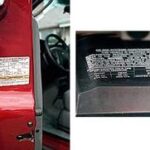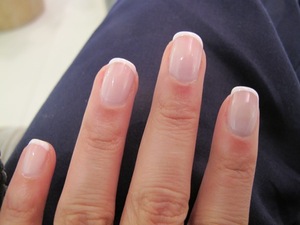Some tires are cemented to the rim. The type of cement required is largely determined by the rim speed of the wheel. On high speed machines a good, elastic, rubber cement made for this purpose is recommended. When properly applied, a good cement should hold the tire on the rim until the tire is worn out. A new cement should be tested before being used to mount new tires. If the rim speed is slow, shellac, a little thicker than is used on wood, may be used as a substitute for elastic rubber cement.
There are two different procedures for mounting tires on metal rims. Each can be used successfully. One is to apply the cement to the rim and the tire, allowing it to dry slightly before mounting the tire on the rim. The other is to place the tire on the rim and apply the cement between the tire and the rim by inserting a rod, approximately one inch in diameter. The latter procedure seems more desirable as the tire can be applied without working with glued surfaces. It also allows the tire to be stretched uniformly on the wheel. However, to insure strong adhesion, some cements may need to set partially before the glued surfaces come into contact. If such is the case, the tire will be very uneven in thickness and require excessive dressing to make it run true. The tire is difficult to shift once the glued surfaces come together.
To mount band saw tires with cement:
1. Remove the band saw wheels from the machine. If the wheels fit on a tapered shaft you may need a wheel puller.
2. Remove the old tire and clean the surface of the rim. Take off dirt, grease, and cement by washing it with benzine or gasoline. A wire brush will aid in cleaning the bottom of the grooves in the rim.
3. Wash the rough or inside surface of the new tire to remove powder and other foreign material.
4. Clamp a large dowel vertically in the bench vise with the end projecting approximately 6″ above the vise. Lay the wheel on the bench in a horizontal position with the dowel projecting through the hub.
5. Divide the rim of the wheel into four equal parts and mark the points on the edge of the rim with chalk.
6. In a like manner divide the tire into four equal parts, marking the points on the edge of the tire with chalk.
7. Clamp the tire to the rim with a point on the tire even with a point on the rim.
8. Stretch the tire and clamp it to the rim so that the second points approximately meet.
9. Continue stretching and clamping the tire to the rim until it is mounted. Be careful not to damage it.
10. Remove the clamps and place a rod approximately one inch in diameter between tire and rim.
11. Roll the rod around the rim, at the same time applying a liberal coat of cement to both the tire and the rim behind the rod. Be sure there is sufficient cement to squeeze out at the edges of the tire and the rim.
12. Remove the rod and adjust the tire until the marks on the edges of the tire and the rim correspond. The tire should project over both edges of the rim.
13. After the glue has dried almost 40 hours trim off the cement and rubber flush with the edges of the rim.



